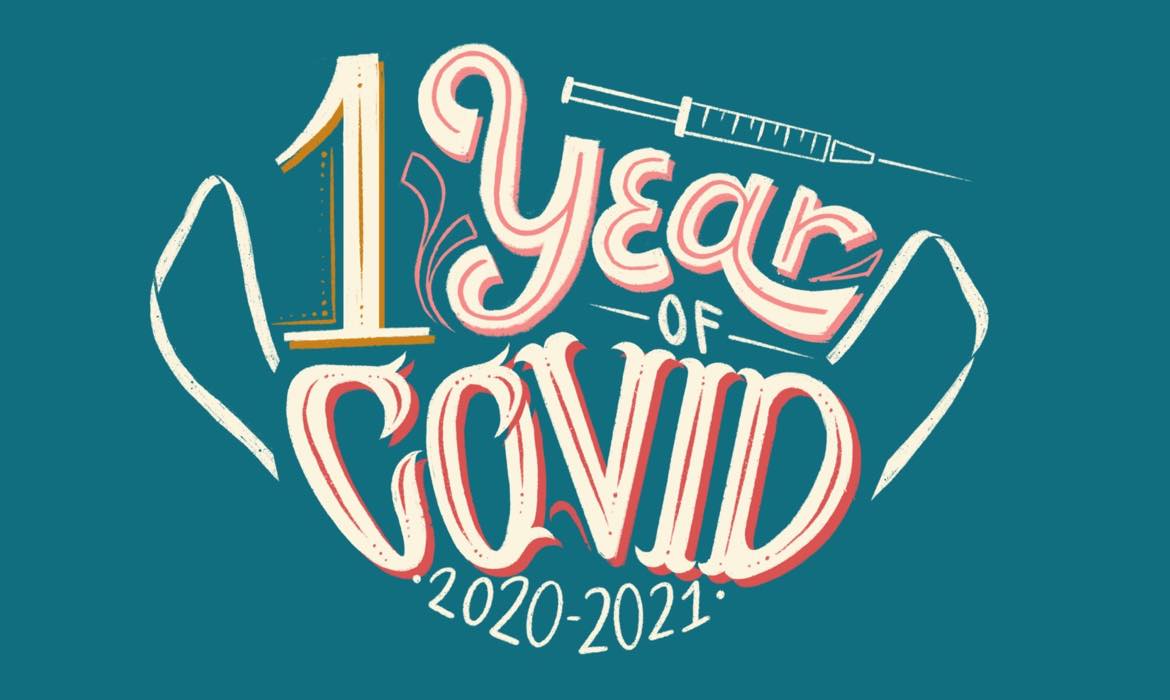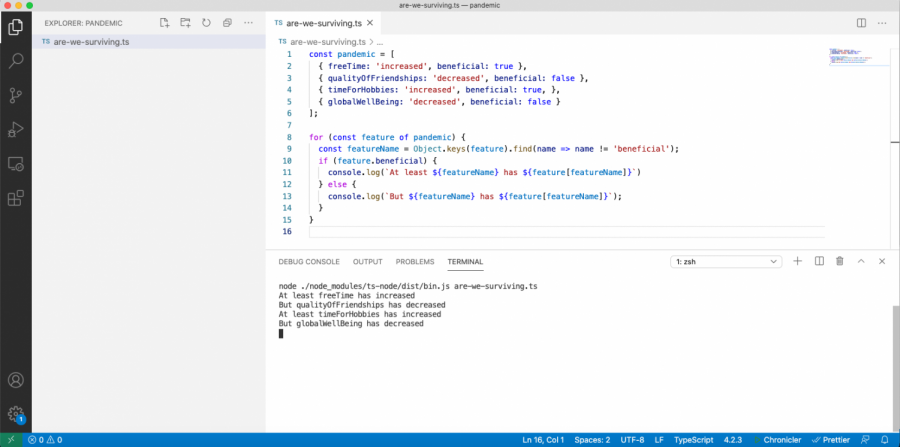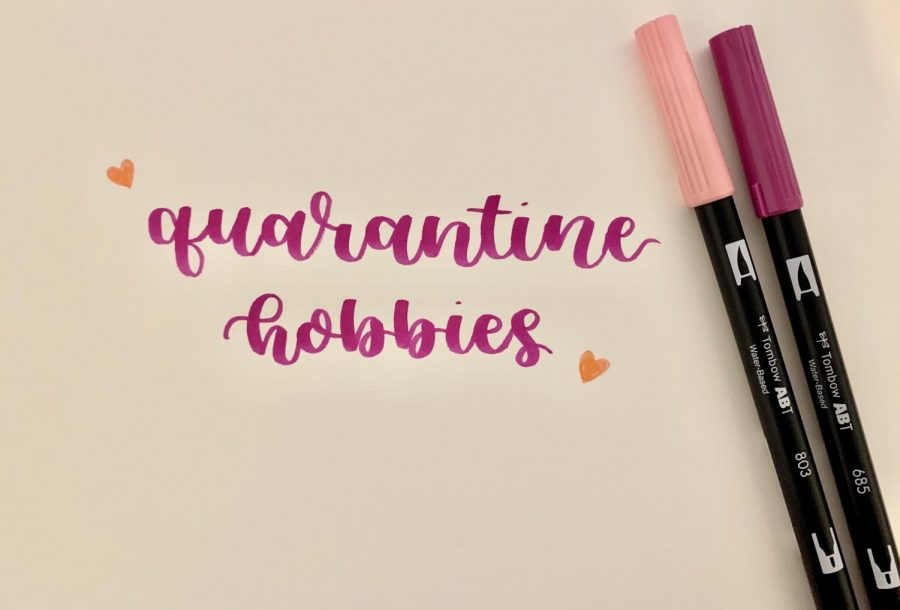Growing up ahead of the curve: Gen Z on living through a global pandemic
April 17, 2021
On March 12, 2020, Head of School Brian Yager announced through the speakers that the upper school would be closing due to the public health threat of COVID-19. Though we celebrated in the hallways and promised to see each other in a few weeks, we were in no way ready for the year ahead of us.
The days dragged into weeks, then months, until finally, one month ago we arrived at the one-year anniversary of the start of quarantine.
Each morning from Monday to Friday, we greeted each other through computer screens, amidst spotty WiFi connections and endless Zoom room numbers. We’ve endured over 365 days of the same four walls, the same morning logon and afternoon logoff routines.
Above all, the pandemic has brought uncertainty. But as a generation that has always lived on the brink of change, it has been one more instance of a challenge in our world, and we’ve tried our best to adapt accordingly. We’ve faced fear and conquered it, experienced loneliness and embraced it, battled the unknown and welcomed it.
And now, as we watch our friends, teachers and family members receive vaccinations and plan our return to normalcy, our world is gradually becoming a glass half-full again. Half-full, and continuing to fill with hope with each passing day.
Each member of our journalism staff has approached the pandemic in their own way, sometimes together and sometimes separate. We’ve reconnected with long-lost friends, escaped into literary universes, fiddled around with new instruments and started culinary adventures. Over this last year, so many high school milestones were left unreached. Yet one universal truth persists: an unplanned pressure to grow up fast while attempting to preserve our last fragments of childhood joy and innocence.
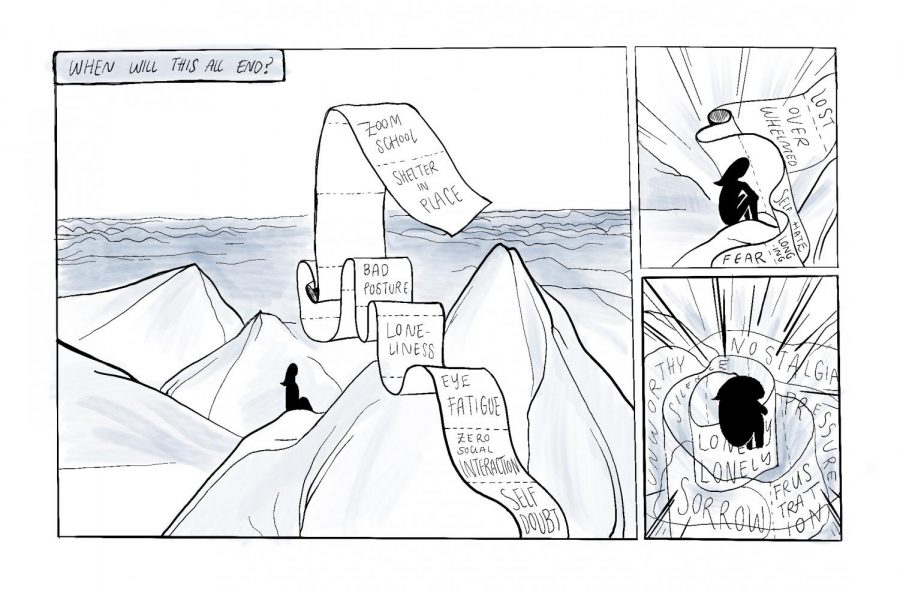
How we overcame the unknown of 2020
Lucy Ge (11)

When in-person school shut down, my friends and I were a flurry of excitement, blissfully believing that Zoom classes were just a temporary nuisance. Looking back through my photos last March, I see pictures that seemed so mundane then: sitting with a group of friends at lunch, photos from a history project, smiling selfies with friends.
While my friends and I all dealt with the stress and breakneck speed of junior year, we did so individually, unable to groan collectively over our homework assignments at lunch or discuss concepts during classes. With all of us busy with classes and extracurriculars, organizing entire group virtual get-togethers became a massive effort. Reaching out to friends who we’re not particularly close with now feels like an extra effort instead of a simple “hello” in the hallway.
Scrolling through my camera roll reminds me of the importance of human connection and the stark contrast between a year ago and now. But I am grateful for everyone in my community who have made the past year more bearable for me: my friends, family, teachers and club and journalism team members. While we’ve all weathered individual challenges this past year, we’ve also found new ways to connect, and I’m excited for the eventual continuation of in-person school.
Esha Gohil (11)

On March 12, 2020, I walked into my kitchen after school shut down to my mother’s excited voice: “Esha, you don’t have ballet for three weeks!” A wave of relief washed over me, delighted at the idea that I wouldn’t need to spend four hours each afternoon cooped up in a cramped studio with 12 other dancers.
At the end of the three-week period, the ballet school sent out an email regarding new Zoom ballet classes. I was simultaneously excited and annoyed that I’d need to continue with ballet during what I’d originally thought was a short break. Every evening that I’d sign off of Zoom ballet, my motivation slowly declined more and more until finally – three months in – I decided to simply stop showing up. After all, what good is online class compared to in the studio?
When COVID-19 cases hit a slight low in October, the county allowed in-studio class. As I walked into the building and began to dance, I realized how truly important being in person is to me. Though we can’t get as accurate corrections, we must wear masks and we have to dance six feet apart, being in person reignited the love of ballet that online classes had extinguished.
Sara Yen (12)
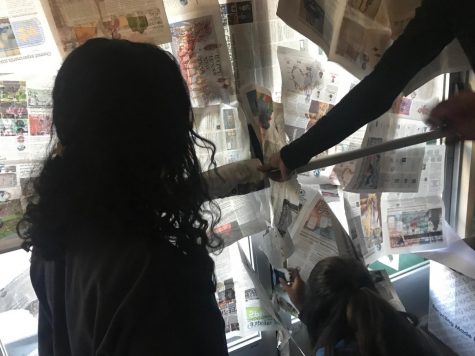
Students sitting like ducks in a row on the burning turf of Davis Field. Stifled giggles as a chair falls down from a barricade of furniture blocking a door. Worksheets and newspapers taped on windows like hasty papier-mache.
These were the mundane events of practicing safety protocol, from fire drills to code red. These precautions used to be annoying, disrupting lecture or an assessment, or perhaps enjoyable, giving a break from the quotidian school day. As I look back, having been away from campus and without need for safety drills for a year, I miss these small moments of excitement (or seriousness) that were a part of our lives at school.
Angelina Hu (9)
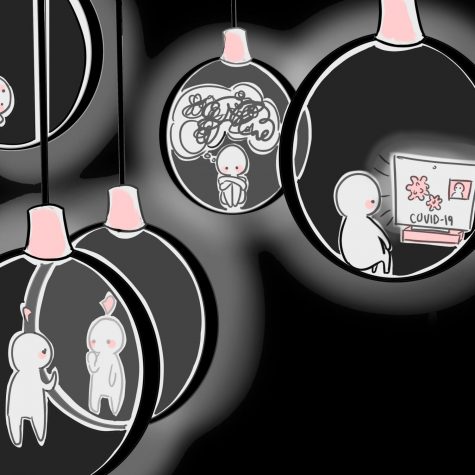
Wake up, open Zoom, go to school, sleep. Wake up, open Zoom, go to school, sleep. Repeat. For the past year, life has been a monotonous routine of eating, sleeping, working and attending classes, spending the whole day glued to the screen but also confined to the screen. Life has become limited to Zoom meetings, isolating each and every one of us in our own little boxes.
Arya Maheshwari (12)
The effects of the pandemic hit me on Oct. 29. How do I know? It wasn’t some epiphany, breakdown or any acute anguish — I don’t remember the day at all.
Yet three painted blocks above my desk remind me: Oct. 29 was the last day recorded on my Snoopy-themed calendar. The calendar was a gift from almost a decade ago, but I only began using it in high school, to remind myself of the countability of weeks and months and years, the importance of each individual day.
But now I stare at Oct. 29, almost six months since I last updated the calendar, and I don’t try to change it. Perhaps it’s just lethargy, a symptom of senioritis. Maybe it’s denial: denial of the fact that I’ll be graduating in two months, leaving one unprecedented environment for another, or denial of the fact that it’s been a year of pandemic and at this point, I don’t really know how I feel or what I’ve lost anymore.
Right now, though, I’ve decided to think of it as acceptance. I know it’s been six months since time started to slip away from me—since my “carpe diem” motivation started to crack and crumble. I might be getting it back soon, perhaps in May, or even this month, maybe tomorrow—who knows? For the moment, I’d rather acknowledge where I am right now.
Anika Mani (11)
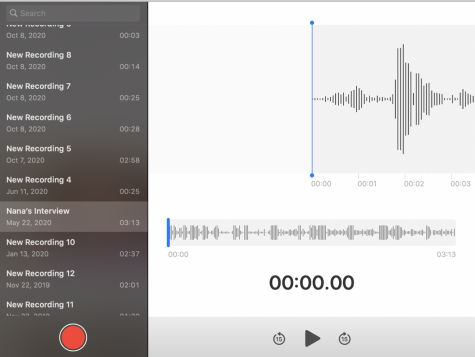
My mother and I had brought paper towels to my grandparents’ house due to the shortage. Glued to the TV screen, my grandfather sat on a beige reclining chair one Saturday evening. It was March 14, 2020, and no one knew what was to come the following year between his dementia diagnosis and the global pandemic.
Every Saturday evening since then, I have visited my grandparents while taking all safety precautions. One particular Saturday stood out to me, shortly after quarantine started. I was given a history assignment where I had to interview an elderly relative, and I quietly asked my grandfather, careful of his unstable emotions. I sat across from him and wrote down each of his words, pressing the record button in my voice memos. Little did I know that was the last conversation I would have with him.
At the time, I thought the interview would be a good memory exercise for him, but now the recording serves as a special memory to me. Some days my grandfather can no longer speak, while others he just whispers my name. But now that he’s vaccinated, he grabs my hand every time he sees me, sometimes taking minutes to let go.
Arely Sun (11)
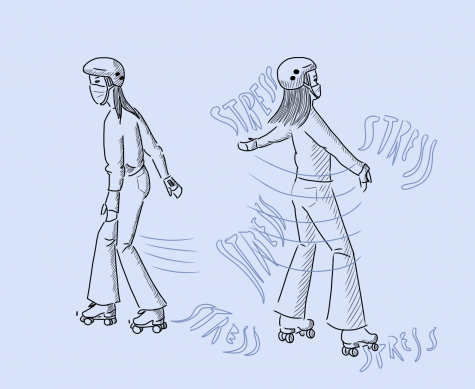
My roller skates arrived on the day the sky was painted a macabre shade of orange from last fall’s devastating forest fires. The smoke and ashes suspended high in the clouds smothered the sunlight along with whatever positive emotions I tried to force myself to feel. How was I supposed to feel “fine” when the world looked straight out of an apocalyptic movie?
I carefully pried open the cardboard box containing the four-wheeled skates and pulled each smooth, black boot from its tissue paper. After moments of tugging and lacing, I attempted to stand up and roll forward, only to find the task much more difficult than tutorials made it seem. I took one shaky stride after the other, hyper-focusing on my feet to not trip over the tiny pebbles on the concrete. Slowly, my wobbly stance stabilized, and I found myself smiling at my newfound escape.
After the ashes dissipated, I continued to roller skate to combat the loneliness of quarantine and to unwind after a long day of Zoom classes, immersing myself in practicing heel-toe transitions and manuals and dips just for fun, for nobody but myself. In the darkness of the pandemic, I found a silver lining — commute time translated into time to try new hobbies and to appreciate escapism.
Sania Gupta (9)
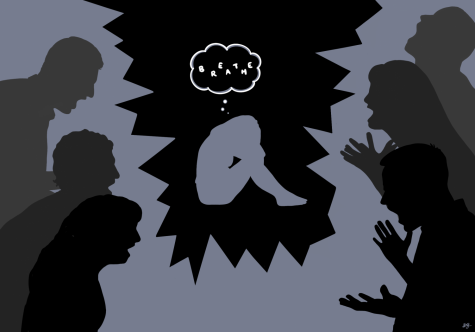
Nilisha Baid (12)
On Dec. 20, 2020, I wrote a note for my positivity jar: “tested film camera! took pretty photos of the backyard.”
I’d started my day with about a dozen Google searches. My brother’s coworker had gifted me a film camera months earlier, and I was determined to learn how to use it. I soon found myself in my backyard, searching for objects to photograph. I noticed dew reflecting the morning sunlight, a few dead leaves adding contrast that would be striking on my black and white film. I observed a bee hovering by a flower, its wings vibrating in the air. I captured the silhouette of a plant, its tiny leaves providing detail to the image.
If you just read the note, you’d have no idea that it was my eighteenth birthday. You’d have no idea that I’d cancelled my plans yet again due to the new stay-at-home order or that all I wanted to do was sit in my room and be sad. That’s been my primary takeaway since the pandemic started: not how to find positive moments, but how to create them.
Sarah Mohammed (10)

On Christmas Eve, my mother and my sister baked holiday cookies. I came down to the kitchen to watch them, their faces all soft and slack, mouths half-open in mid-giggles. For me, it was a reminder of comfort, of hope. My family is here. My family is healthy and happy and making holiday cookies the same way we do every year: my sister kneading the dough between her pudgy fingers, my mother stirring different colors of icing, both of them swaying to no song but their own.
Later that night, I try the cookies, and they’re delicious, just like how I remember. I cherish the taste of lemon and butter and spice, the taste of cold winter and the holidays, the taste of my mother and my sister’s small pride.
So much has changed, but we can find comfort in what hasn’t, in the things that we are still grateful to be a part of. I’ve learned that hope can be one second or one year, a single photograph or a lifetime held out like open arms: we just need to look, to search for what we are holding, what we have held and hold it even closer.
Lavanya Subramanian (10)
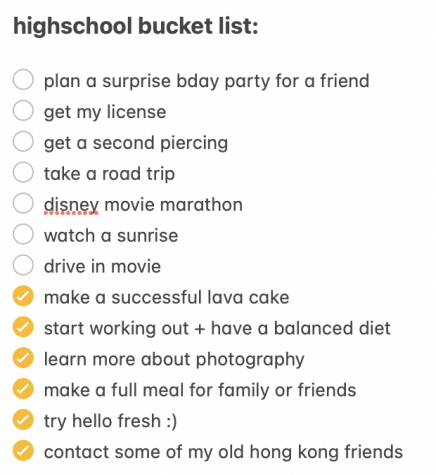
The summer before my freshman year of high school, my friends and I created bucket lists of everything we wanted to do in high school. Blissfully unaware of the pandemic that would soon turn our lives upside down, we planned to get our licenses together, stay up all night watching old Disney movies together and so much more.
However, once the pandemic hit, the list slipped my mind. It just seemed like a painful reminder of the plans my friends and I had once been so excited for.
Recently, I was scrolling through the Notes app on my phone and came across the list. Hit by a wave of nostalgia, I opened it, prepared to come across rows of items that remained unaccomplished; instead, I was pleasantly surprised. I found myself checking off multiple items that I had unknowingly finished in quarantine. When I reached the bottom, almost a third of my list was completed.
Without the pandemic, I never would’ve started working out or cooking new dishes with my family. I realize that in the midst of all the confusion, I formed priceless memories even without my knowing.
Irene Yuan (11)
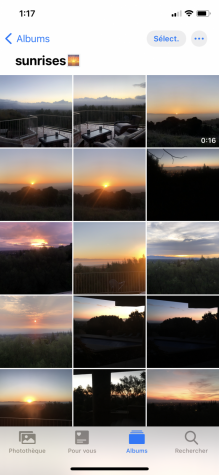
Being an early riser, one of my favorite things to do has always been to watch the sun rise outside my window as I get work done before the school day. As the days dragged on in quarantine, the daily sunrise became the only thing that was inherently different about my immediate surroundings that I saw every day. While the trees and buildings remained the same day in and day out, the sunrise lit up the sky in a different way each morning. Beyond that, the daily sunrise became a measure of time, proof that despite the fact that every day felt the same, the world kept turning and time continued to progress.
Shinjan Ghosh (11)
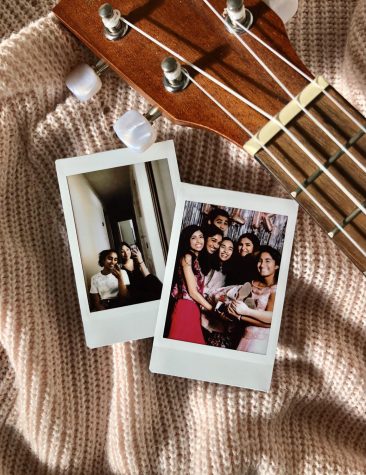
After waving goodbye to my teacher and leaving my last Zoom meeting of the day, I rushed across my bedroom to retrieve my ukulele from its place on the wall. Quickly, I checked that my ukulele was tuned and found the chords to the song that had been stuck in my head the whole day. Following the rhythm of the song, I strummed my ukulele and sang the lyrics, excited to learn another song on the ukulele.
I realized that before I would constantly rely on my friends during good and bad times. I would not only find happiness in the moments we spent together, but also receive comfort in the moments that I needed their support.
Although I have tried to stay in touch with them as much as possible, it was difficult to maintain relationships and receive the same support without the constant interactions we had before. Slowly, my mental health worsened, and I realized I would have to find something I could do on my own that made me happy.
Throughout the past year, I have been experimenting with music and songwriting on my ukulele everyday. As I found myself in a better place mentally, I became more comfortable reaching out to my friends once again, but I have continued to explore music because I enjoy being able to express myself creatively and independently.
Sally Zhu (10)
Colors of familiar buildings fly past me as I pedal rapidly on my bike. I see flashes of green from the trees lining the sidewalks, beige breakfast restaurants and faded yellow string lights. Usually, I have to be more cautious when biking along the road, but this afternoon, the sound of my mom biking behind me is louder than the few cars whirring along the streets.
It’s been a while since I left the house–just one of a few times the entire summer. We bike through the small streets of downtown Saratoga. In the evenings, the restaurants used to be packed with people, but not anymore. The small candy stores and wine-tasting shops don’t have lines of customers, and the parking lots are nearly empty.
But as the weeks passed, my biking trips began to fill with more voices and new “Open for outdoor dining” signs. Tables were spread out onto the streets, and cars filled the surrounding lots. I even bought a cloth face mask from my favorite antique store.
Throughout this past year, all of us have struggled with being remote and losing so much of what we’re used to, but with the passing days, we are starting to find comfort in our surroundings again, reminding us that our world is slowly returning to normal.
Selina Xu (9)
Sydney Ling (9)
I believe that this past year has brought out the worst and best facets of humanity. There’s been so much trauma and violence and turmoil that have exposed our worst corners of society, yet at the same time, there’s also been hope and community and action.
Both the big moments and even the small ones—from attending a Black Lives Matter protest and seeing everyone rally together, to the hellos I get from my neighbors whenever I go on a walk—can be threaded together in a bigger story of what we can do as a society.
Although this year has been difficult for everyone, I’ve developed an appreciation for the little things, like my neighbor playing the accordion in the backyard, the florid-hued bustle of the local fruit market or the tickle of the wind while riding my bike. All of these moments bring me back to earth and continue to help me stand on both feet. And step by step, everything will grow into a new normal.
Alysa Suleiman (11)
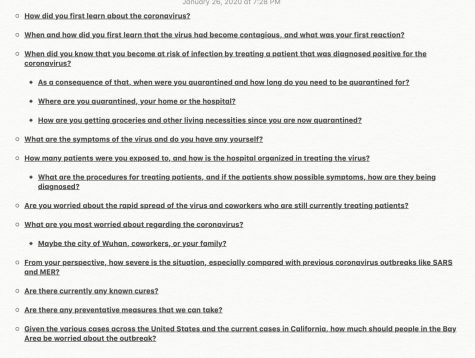
This past year in quarantine confined us to our houses and our screens. Physically, I remained in the same locus, but mentally and emotionally, I only now see that I have developed and grown, cried and laughed and most surprisingly, changed. This quarantine paradox initially surprised me: how could I identify my own growth when we customarily substantiate progress as something tangible, not intangible?
The truth is, when I wrote down these questions for an interview I conducted with a Wuhan doctor last January, I felt indescribable fear. More than 365 days ago, the virus sounded like a foreign and unstoppable monstrosity, and even though we pasted on smiles and told each other we would be okay, my despair would undeniably mount with each day’s rising case numbers. Now, more than 365 days later, with the promise of vaccines, a somewhat more united country and a dozen masks hung up at the ready alongside my new car keys, I found myself truly finding hope and confidence.
So while we look back, fearful that we’ve remained stagnant as students, teachers, creators, artists, athletes and more, I encourage us to look with pride for shouldering through and move forward with an understanding that the progress we’ve made, both tangible and intangible, continues.
